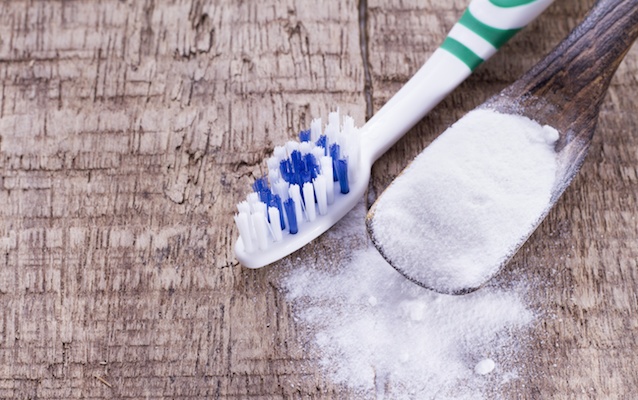
While we consider oral care to be a cornerstone of our personal hygiene routine, it wasn’t until relatively recently that we actually knew — or even cared for that matter — about our dental health. In fact, the world’s first dental school, and thus the world’s first certified Doctor of Dental Surgery, wasn’t established until the 1840s. And, as our research into dentistry and knowledge about our oral health continues to grow, some of our bizarre, outdated old habits had to fall by the wayside.
Hard Bristle Toothbrushes
While hard bristle toothbrushes might feel more effective with their stronger scrubbing pressure, they’re actually quite the opposite. The hard bristles can damage your gingival (gum) tissues with hundreds of tiny cuts, letting bacteria beneath the surface where it could potentially lead to infection. The hard bristles can also push your gums, exposing the delicate root of the tooth, which can cause painful sensitivity.
Even though hard bristle toothbrushes are increasingly difficult to find at the store, they’re still out there. Interestingly, they work really well to scrub mildew out from between bathroom tiles, so we recommend keeping their use strictly to household chores and away from your mouth.
Brushing With Baking Soda
It’s an age-old beauty trick: baking soda and water forms an alkaline paste that can prevent plaque formation and whiten teeth. But, when used in large amounts over time, the abrasive properties in baking soda can erode your tooth enamel and damage your gums, causing sensitivity and even hastening tooth decay. To be safe, consult with an accredited dentist in your area, and use reputable toothpaste formulas that have been approved by the American Dental Association (ADA).
Mint Chocolate Flavored Toothpaste
This flavor trend came (and went) with the early 2000s. We know mint to be the most common flavor for toothpaste and other dental care products, but the mint chocolate flavor wasn’t enough to keep customers’ mouths feeling fresh. You may still find this flavor in the kids aisle, but adults tend to favor flavors with traditional and refreshing peppermint, spearmint, and wintermint tastes.
Fortunately, mint chocolate-flavored toothpaste didn’t do any damage to teeth, so if that’s your preference and you can still find it, indulge yourself!
Using Novocaine in Dental Procedures
"The hard bristles can damage your gingival (gum) tissues with hundreds of tiny cuts, letting bacteria beneath the surface where it could potentially lead to infection."
Procaine (commonly referred to by its most common trademarked brand name, Novocaine) was the dental anesthetic of choice from the early 1900s through the late 1950s, and only fell completely out of use in the United States in recent years. Novocaine was the go-to method of pain prevention during oral procedures like drilling, filling, and extracting teeth. Before that, dentists would use pure cocaine. And, prior to that, patients would drink a significant serving of whiskey or brandy to numb the pain of extractions and other intensive oral procedures.
Widespread allergic reactions to para-aminobenzoic acid (PABA) — the chemical the body converts novocaine into when it’s metabolized — forced dentists to start moving to other injectable anesthetics and topical analgesics in the mid-20th century, and today, so many superior options exist, Novocaine has been completely eliminated from modern American dental practice.
Storing Your Toothbrush in a Plastic Container
It’s a common belief that plastic toothbrush holders can protect your brush from germs and bacteria. But, it turns out these plastic holders do more harm than good for your oral health. The dry, dark holding cell for your brush actually encourages mold growth. Even after a solid rinse, your brush still retains enough organic debris from your mouth to breed and feed an entire army of mold and bacteria, and the moist, dark environment inside that toothbrush case is the perfect breeding ground.
If you’re really looking for a barrier to guard your bristles, dental experts recommend a fabric brush shield, which protects the brush head from outside contamination while allowing it to dry out naturally and breathe so that microbial growth is kept to a minimum.
As dental science and technology continue to evolve, so will our dental habits. But, no matter what wacky toothpaste flavor you choose for your professional teeth cleaning, or new pain-free anesthetic you’ll use for your next oral health procedure, you can save on dental care with a discount dental program that fits your budget and oral health needs.

